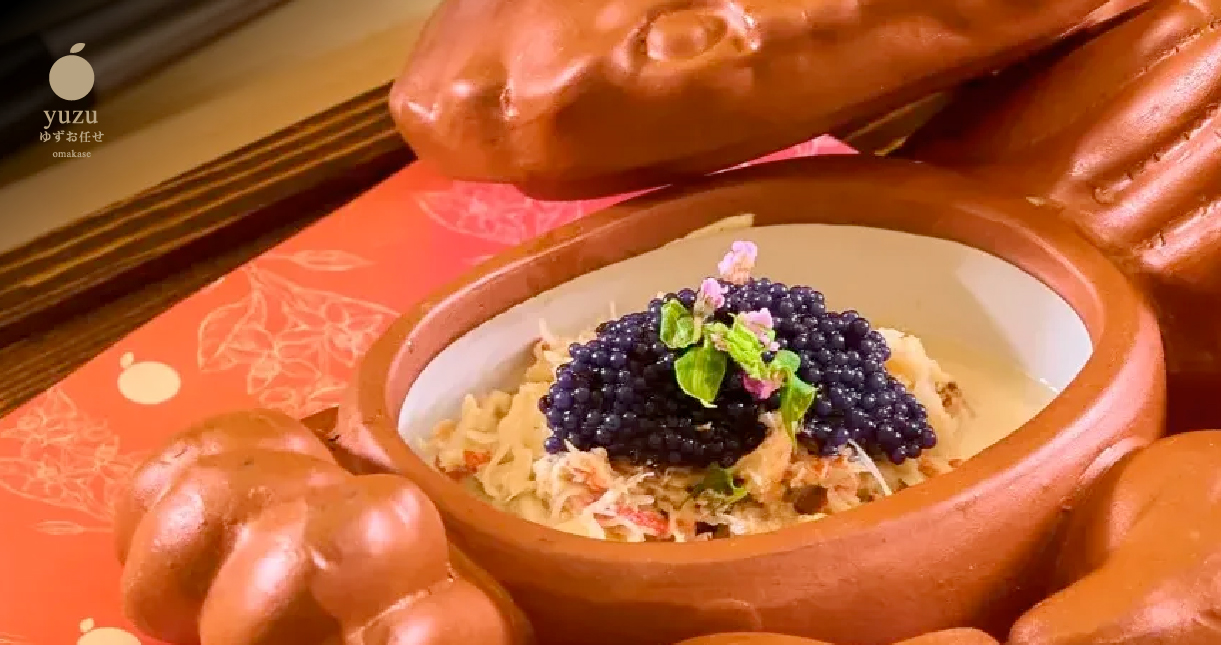
Fusion Flavors: How Yuzu Omakase Blends Japanese Techniques with Thai Ingredients
Yuzu Omakase is renowned for its ability to masterfully blend the refined techniques of Japanese cuisine with the vibrant, bold flavors of Thailand. By introducing local Thai ingredients into traditional omakase dishes, Yuzu Omakase offers diners a culinary journey that seamlessly bridges two distinct food cultures. The fusion of these flavors not only creates unique and innovative dishes but also elevates the dining experience, reflecting the restaurant's commitment to both tradition and creativity. This article explores how Yuzu Omakase incorporates local Thai ingredients into their menu, using only the freshest and finest produce to complement classic Japanese techniques.
The World ● 2024 Sep 24
Fusion Flavors: How Yuzu Omakase Blends Japanese Techniques with Thai Ingredients
The Art of Fusion at Yuzu Omakase
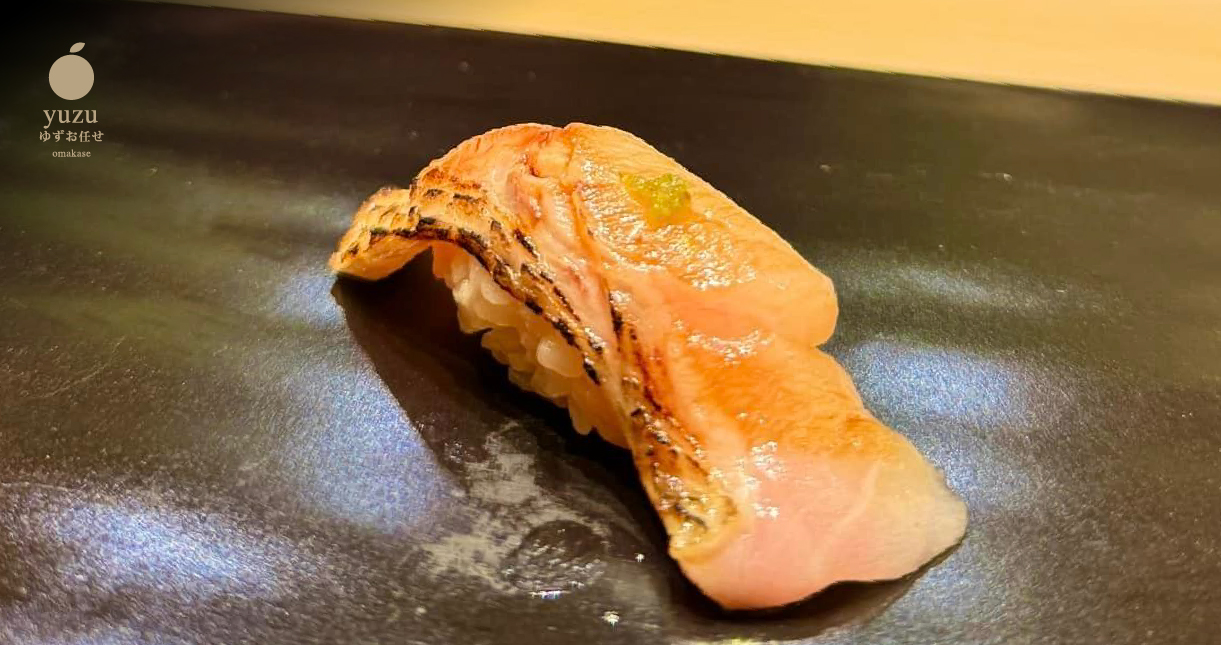
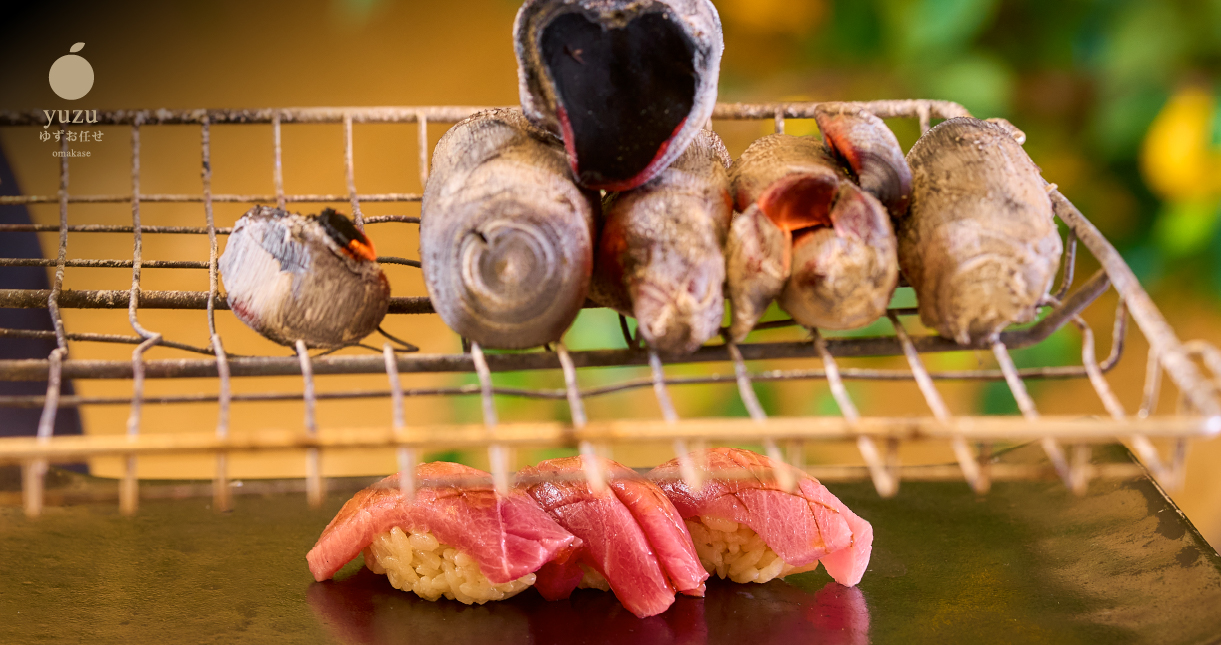
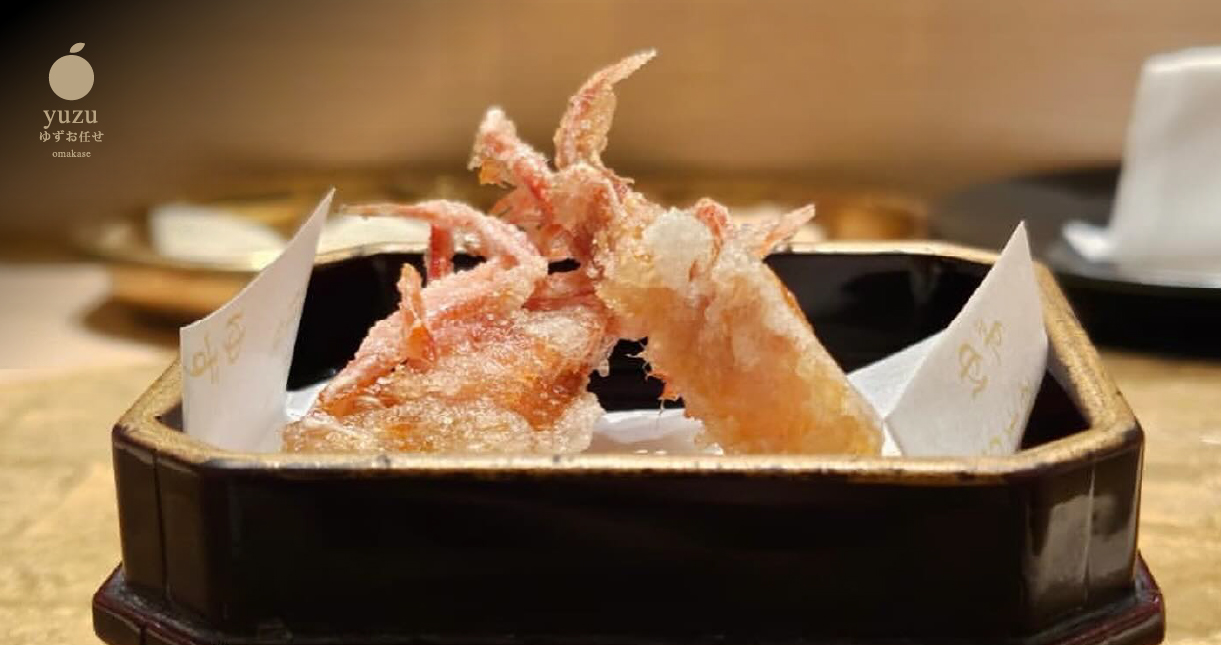
1. Sushi and Sashimi with Thai Accents
At Yuzu Omakase, the fusion of Japanese and Thai flavors begins with the foundation of omakase dining: sushi and sashimi. The chefs creatively incorporate Thai ingredients to elevate the flavors of familiar dishes while maintaining the integrity of Japanese culinary precision.
Akami Gold
The richly flavored Akami (Lean Tuna), a classic in Japanese omakase, is given a new dimension with a hint of Thai lime and fresh herbs, balancing the natural umami of the fish with a zesty freshness.
Kinmedai (Golden Eye Snapper)
This delicate, lightly sweet fish is paired with a Thai-inspired dipping sauce made with kaffir lime and a touch of lemongrass, bringing a bright citrus note to the smooth texture of the sashimi.
Otoro (Fatty Tuna)
Known for its luxurious, melt-in-your-mouth texture, Otoro is enhanced with a drizzle of yuzu and Thai lime sauce, infusing the dish with a refreshing acidity that cuts through the richness of the fish.
2. Grilled Dishes with Thai Flavors
Grilling is an essential technique in both Japanese and Thai cuisines, and Yuzu Omakase brings these two worlds together through innovative grilled dishes that highlight the smoky, charred flavors so beloved in both cultures.
Grilled Otoro + Crispy Iberico
This fusion dish showcases the richness of Otoro with the succulent crispiness of Iberico pork, served with a side of Thai-inspired dipping sauce made from fish sauce, Thai basil, and bird's eye chili, giving a fiery kick to this indulgent dish.
Anago (Sea Eel)
Grilled to perfection, Anago is complemented by a light Thai herb garnish, blending the natural sweetness of the eel with the bold, aromatic notes of Thai coriander and mint.
3. Thai-Inspired Small Bites and Appetizers
Incorporating Thai ingredients into smaller dishes allows Yuzu Omakase to introduce guests to the flavors of Thailand in creative, bite-sized forms that add to the progression of the omakase experience.
Zuwai Tofu Tempura with Caviar
A delicate and crispy tempura made from Zuwai crab and tofu, this dish is paired with a Thai-inspired dip that combines tamarind, lemongrass, and a touch of Thai chili, creating a delightful balance of sweet, sour, and spicy flavors. The addition of caviar brings a luxurious touch to the dish.
Junsai Ponzu
A refreshing combination of junsai (water shield), served with a Thai-infused ponzu sauce that incorporates both Japanese yuzu and Thai lime, adds a layer of citrus complexity. This dish provides a light and tangy start to the meal, preparing the palate for the richer dishes that follow.
4. Fusion Sushi Rolls
Yuzu Omakase’s creative sushi rolls combine Japanese ingredients with Thai flavors, offering a playful take on classic sushi by adding unique, local twists.
Negitoro Roll
This traditional roll featuring toro (fatty tuna) and green onion is elevated with the addition of a Thai herb mix, which includes cilantro and lemongrass. The herbs give the roll a fresh, zesty flavor that pairs well with the richness of the toro.
Hand Roll with Thai Twist
Wrapped in crispy seaweed and filled with fresh fish, these hand rolls are garnished with Thai basil and a touch of chili-lime aioli, blending the coolness of the fish with the spicy, herbaceous notes of Thai cuisine.
5. Thai Citrus and Yuzu Fusion
Citrus fruits play a major role in both Japanese and Thai cuisine. At Yuzu Omakase, dishes that highlight citrus flavors blend the fragrant yuzu of Japan with the bold, tangy fruits of Thailand, creating a refreshing contrast in many dishes.
Yuzu Not Yuzu
This dish perfectly exemplifies the fusion concept, combining the flavors of Japanese yuzu with the zest of Thai lime in a refreshing sorbet that cleanses the palate between courses.
Yuzu Sake
A signature drink at Yuzu Omakase, this cocktail combines the essence of yuzu with Thai lime and a splash of sake. It’s the perfect drink to accompany the fusion flavors on the menu, balancing sweetness and tartness with a light, refreshing finish.
Thai Ingredients Elevating the Omakase Experience
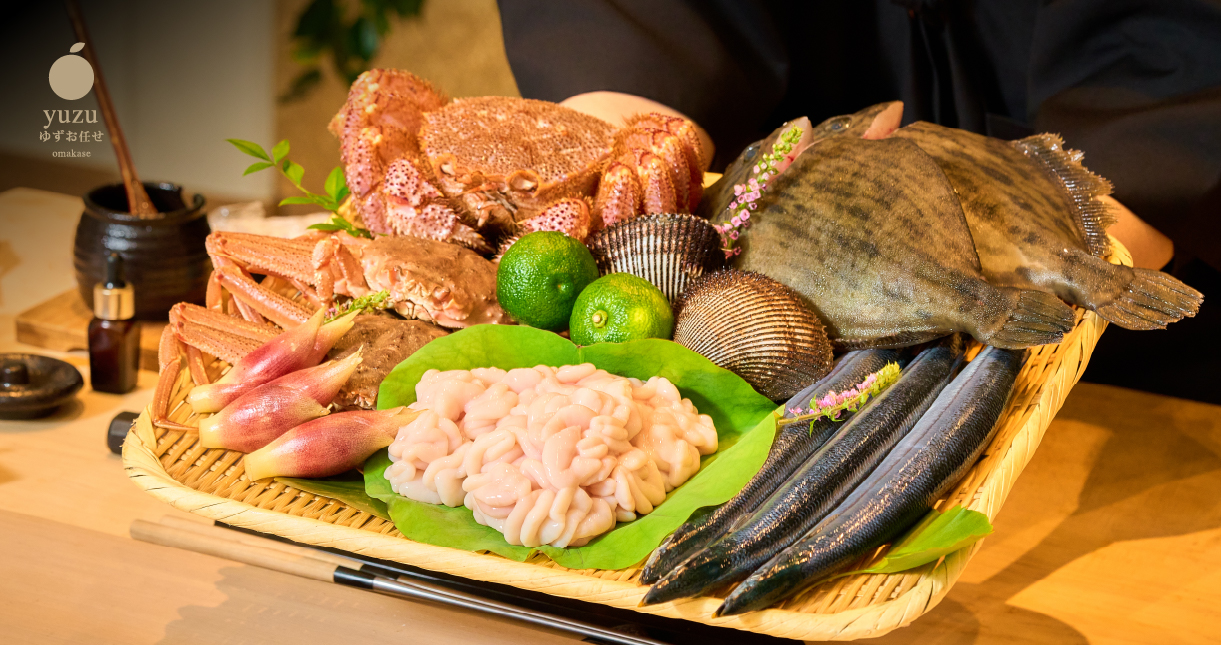
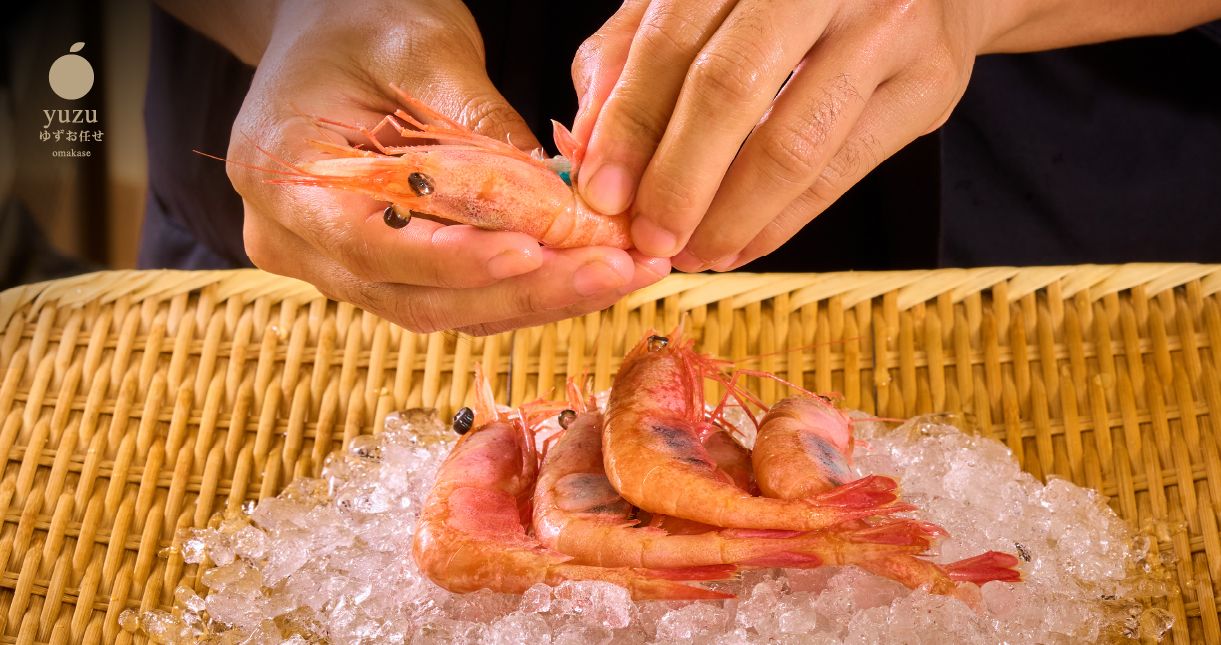
1. Herbs and Spices
Thai cuisine is known for its vibrant use of herbs and spices, and Yuzu Omakase uses these elements in subtle ways to enhance the flavors of its omakase dishes without overwhelming the delicate nature of the sushi and sashimi.
Kaffir Lime
The fragrant zest of kaffir lime adds a citrusy brightness to many dishes, particularly sushi, sashimi, and sauces. Its floral and tangy profile complements the clean flavors of fresh fish like Sayori (Halfbeak) or Shima Aji (Striped Jack).
Bird’s Eye Chili
Known for its fiery heat, bird’s eye chili is used sparingly in sauces and garnishes to add a punch of spiciness to dishes without overpowering the delicate flavors of the fish. It pairs particularly well with grilled dishes like Kuruma Ebi (Japanese Tiger Prawn).
2. Thai Fruits and Citrus
Thai fruits are naturally sweet and tropical, making them ideal for complementing savory Japanese dishes. Thai citrus fruits, in particular, are key ingredients in enhancing the balance of acidity and sweetness in Yuzu Omakase’s fusion creations.
Thai Mango
Sweet and succulent, Thai mango is featured in desserts and occasionally incorporated into sushi rolls for a tropical burst of flavor that contrasts beautifully with the saltiness of the fish.
Som Sa (Thai Orange)
This unique Thai citrus is used in dressings and marinades to bring a more complex acidity to the dish, balancing the umami flavors present in ingredients like Uni Bafun (Sea Urchin).
3. Fresh Thai Seafood
Thailand’s rich marine resources are seamlessly integrated into the omakase menu, giving diners a taste of the local seafood bounty alongside premium Japanese imports.
Ama Ebi (Sweet Shrimp)
Fresh Ama Ebi, sourced locally, brings a naturally sweet and creamy flavor to the menu, often served raw as nigiri or lightly grilled to enhance its richness.
Hotate (Scallop):
Sourced from Thailand’s waters, Hotate is prepared using Japanese techniques but often paired with a Thai-inspired sauce featuring lime, fish sauce, and chili, offering a perfect blend of sweetness and spice.
Conclusion
Yuzu Omakase’s fusion of Japanese culinary techniques with the bold, fresh flavors of Thai ingredients creates a dining experience that is both innovative and deeply rooted in tradition. By incorporating local herbs, spices, citrus, and seafood, Yuzu Omakase transforms traditional omakase dishes into something unique and exciting. Whether you're savoring a Thai-inspired sushi roll or enjoying the citrusy notes of a fusion cocktail, each dish at Yuzu Omakase showcases the restaurant's dedication to blending the best of Japanese and Thai cuisine.

RELATE








